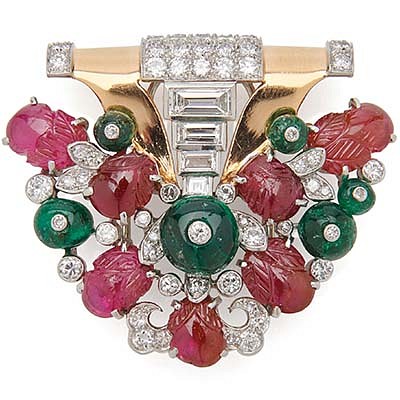GRAHAM VIVIAN SUTHERLAND, (British, 1903-1980), Untitled, 1957
Lot 134
Estimate:
$25,000 - $35,000
Absentee vs Live bid
Two ways to bid:
- Leave a max absentee bid and the platform will bid on your behalf up to your maximum bid during the live auction.
- Bid live during the auction and your bids will be submitted real-time to the auctioneer.
Bid Increments
| Price | Bid Increment |
|---|---|
| $0 | $100 |
| $1,000 | $100 |
| $2,000 | $250 |
| $5,000 | $500 |
| $10,000 | $1,000 |
| $20,000 | $2,500 |
| $50,000 | $5,000 |
| $100,000 | $10,000 |
| $200,000 | $25,000 |
| $500,000 | $50,000 |
About Auction
By Grogan & Company
Nov 7, 2021
Set Reminder
2021-11-07 11:00:00
2021-11-07 11:00:00
America/New_York
Bidsquare
Bidsquare : The Fall Auction
https://www.bidsquare.com/auctions/grogan/the-fall-auction-7687
The Fall Auction features a well-curated selection of over 200 lots of fine art and jewelry. Grogan & Company info@groganco.com
The Fall Auction features a well-curated selection of over 200 lots of fine art and jewelry. Grogan & Company info@groganco.com
- Lot Description
GRAHAM VIVIAN SUTHERLAND
(British, 1903-1980)
Untitled
1957, gouache, watercolor, and crayon on paper
signed and dated G.S. X.III \ 57 along lower edge
sight: 37 x 27 1/2 in., frame: 47 1/2 x 38 in.
Provenance: From the artist to Jean Simpson-Baikie, London; to the current owner, 1967.
Other Notes: After the Second World War, British artist Graham Sutherland incorporated new tonalities and brighter colors into his work. Reflecting on this shift, the artist noted that by 1945, "color became important to me and I found I could use it emotively and arbitrarily." The two works included in this sale exemplify this injection of bright color, particularly in contrast to the sparse instances of color in his earlier pieces. In the decades following the war, Sutherland received several public commissions, including a Crucifixion for the parish church of St Matthew’s in Northampton (1944) and his celebrated design for the tapestry of Christ in Glory at the new Coventry Cathedral (1962). The ‘duality’ of the Crucifixion fascinated Sutherland, who described it as 'the most tragic of all themes, yet inherent in it is the promise of salvation. It is the symbol of the precarious balanced moment, the hair’s–breadth between black and white.' As an Official War Artist employed to capture the bomb damage in Great Britain, Sutherland’s vision for the Crucifixion was undoubtedly impacted by his wartime experiences and reaction to its aftermath. His realized, life–size Crucifixion was inspired by Matthias Grunewald’s famous Issenhiem altarpiece, rendering an anguished and blistered Christ, as well as contemporary photographs of the dead and starving victims of the Nazi concentration camps. As he worked on these large–scale commissions, Sutherland produced many related works, mediating on religious themes and ‘standing forms,’ including trees and fragments of roots. The dramatic perspective lines, bright palette, and almost cruciform figure of Untiled are reminiscent of the Crucifixion at St Matthew's. - Shipping Info
-
Grogan & Company does not offer in-house packing and shipping services; however, we work closely with a number of local businesses who are ready to address any and all of your shipping needs.
Recommended shippers:
Global Pack Ship
617.743.6245
globalpackship@aol.comUPS Store Needham
508.314.1568
store2897@theupsstore.com
-
- Buyer's Premium



 EUR
EUR CAD
CAD AUD
AUD GBP
GBP MXN
MXN HKD
HKD CNY
CNY MYR
MYR SEK
SEK SGD
SGD CHF
CHF THB
THB

















